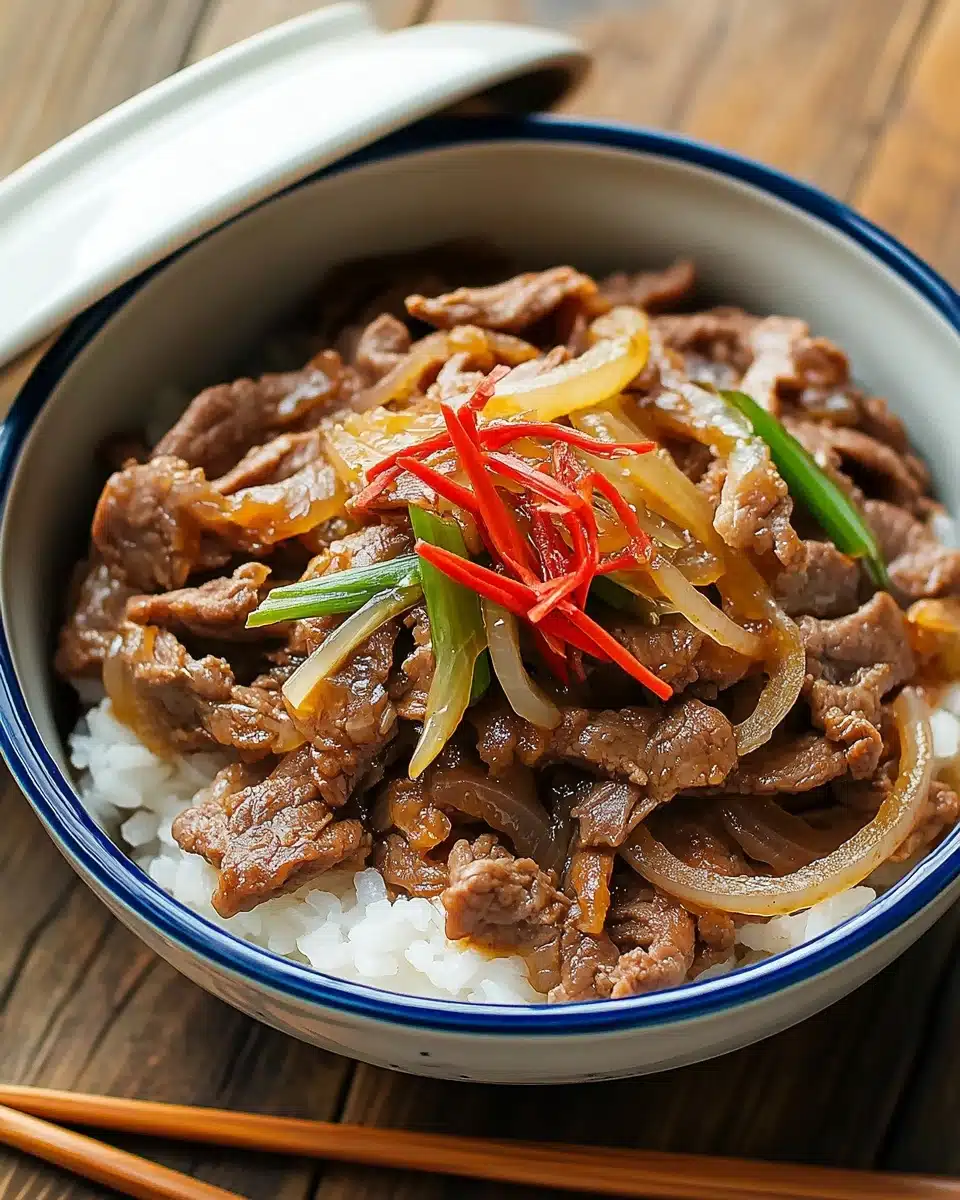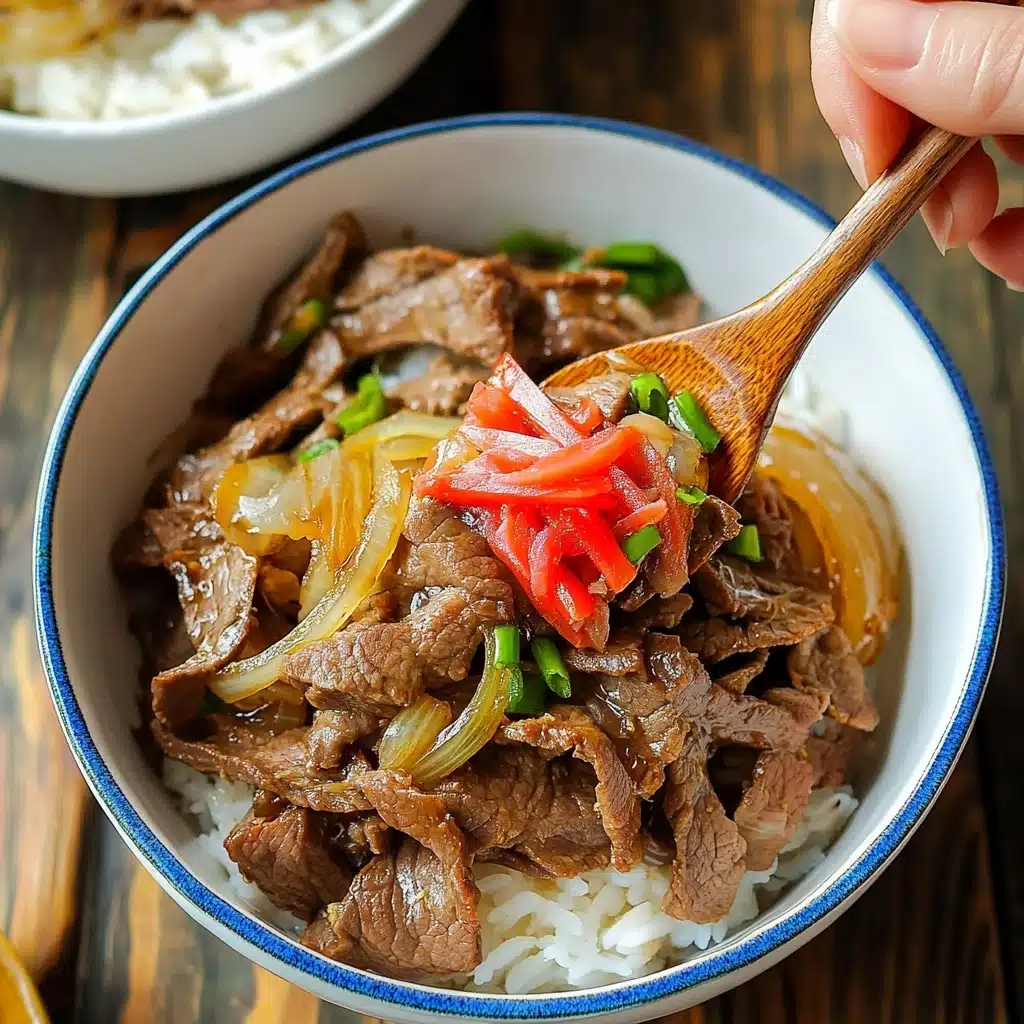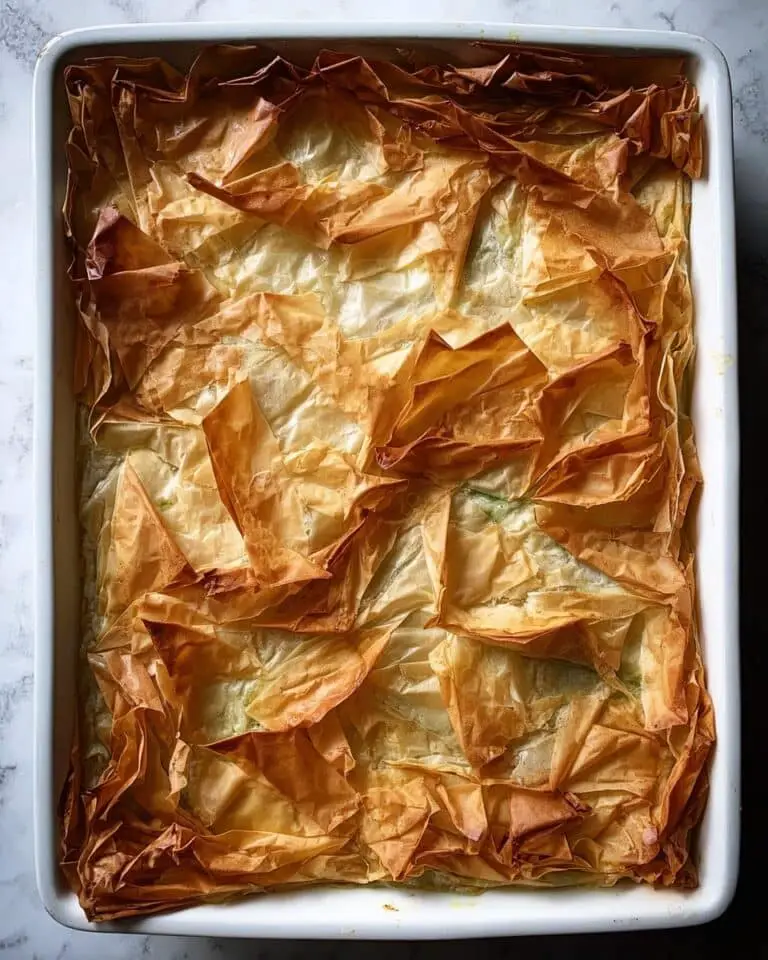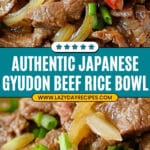I absolutely love this Gyudon (Japanese Beef Rice Bowl) Recipe because it’s the perfect comfort food that comes together so quickly on busy nights. The combination of tender, thinly sliced beef simmered in a sweet and savory sauce over steaming hot Japanese rice is simply irresistible. When you first try it, you’ll find it has this amazing homemade taste that beats takeout every time, plus it’s packed with flavor without any complicated steps.
Gyudon works wonderfully as a hearty lunch or dinner, especially when you want something satisfying but not heavy or greasy. What makes this Gyudon (Japanese Beef Rice Bowl) Recipe worth trying is how flexible it is—you can tweak the sauce or toppings to match your mood, and it always delivers that authentic Japanese donburi experience. I remember the first time I made it at home; my family went crazy for how restaurant-quality it tasted!
Why You’ll Love This Recipe
- Quick and Easy: This dish comes together in about 20 minutes, perfect for weeknights when time is short.
- Authentic Flavor: The combination of dashi, soy sauce, mirin, and sake creates that unmistakable umami-rich taste.
- Family Favorite: My kids and hubby can’t get enough of it — always asking for seconds!
- Customizable: You can add eggs, swap beef cuts, or add more veggies to suit your preferences.
Ingredients You’ll Need
The key to this Gyudon (Japanese Beef Rice Bowl) Recipe’s flavor lies in its simple, fresh ingredients working together. Make sure to pick thinly sliced beef (ribeye or similar for tenderness) and have your dashi and seasonings ready—these build that classic savory-sweet broth.
- Onion: Half an onion sliced thinly gives a subtle sweetness that softens beautifully in the broth.
- Green onion/scallion: Adds freshness and a bit of bite as a garnish at the end.
- Thinly sliced beef: Ribeye works great, but any tender cut sliced very thin does the trick—freezing it slightly makes slicing easier.
- Dashi (Japanese soup stock): Essential for authentic Japanese flavor—use packets or powder for convenience.
- Sake: Adds depth and umami; can be swapped with dry sherry or rice wine.
- Mirin: Sweet rice wine that balances savory notes; you can replace with sake plus a bit of sugar if necessary.
- Soy sauce: Provides the salty backbone of the dish—opt for a good-quality brew.
- Sugar: Just a touch for that signature sweet-savory balance.
- Cooked Japanese short-grain rice: The soft, sticky rice is the perfect base to soak up the sauce.
- Pickled red ginger (beni shoga): A classic garnish that adds tartness and cuts through the richness.
Variations
One of the things I love about this Gyudon (Japanese Beef Rice Bowl) Recipe is how easy it is to customize according to your taste or what you have on hand. Whether you add eggs for extra creaminess or swap beef for a lighter protein, you can make this dish your own.
- Egg Topping: I often crack a beaten egg over the simmering beef for a silky texture—my family can’t get enough of this variation.
- Vegetarian Option: Using vegan dashi and swapping beef for shiitake mushrooms or tofu makes a delicious meat-free version.
- Extra Veggies: Throw in sliced carrots or spinach for added color and nutrition.
- Spicy Kick: A sprinkle of shichimi togarashi or a drizzle of chili oil adds a lovely spicy note.
How to Make Gyudon (Japanese Beef Rice Bowl) Recipe
Step 1: Prepare Your Ingredients
Start by thinly slicing half an onion and cutting your green onion diagonally into thin rounds—this keeps a nice texture and fresh bite for later. Then remove your thinly sliced beef from the freezer about 10 minutes before you start cutting to make it easier to handle. Cut the beef into roughly 3-inch wide pieces so they cook evenly.
Step 2: Make the Simmering Sauce
In a large, cold frying pan, combine the dashi, sake, mirin, soy sauce, and sugar. Stir everything gently until the sugar dissolves completely. Then layer the onion slices over the broth, separating them for even cooking. Spread the beef pieces evenly on top of the onions, making sure they don’t bunch up but instead cover the pan surface.
Step 3: Simmer Until Tender
Cover the pan and turn the heat to medium. Once it starts simmering, lower the heat to maintain a gentle simmer and cook for 3 to 4 minutes. While it simmers, peek in a couple of times to skim off the foam or fat that gathers on the surface—this keeps your broth clear and clean tasting. After that, sprinkle the green onions on top, cover the pan again, and cook for one more minute.
Step 4: Serve with Steamed Rice and Garnish
Divide your freshly cooked Japanese short-grain rice into bowls, drizzle some of the simmered sauce over it, then top with the beef and onions. Feel free to spoon a little extra sauce on the beef if you like it saucier. Finally, add a small pile of pickled red ginger on the side for that perfect tangy contrast that brightens up every bite.
Pro Tips for Making Gyudon (Japanese Beef Rice Bowl) Recipe
- Freeze the Beef Slightly: This makes slicing thin, even pieces quick and much less slippery—trust me, it’s a game-changer.
- Skim Off Fat and Foam: Removing this during simmering keeps the broth tasteful and prevents greasiness.
- Use Quality Dashi: It really makes a difference in depth of flavor; instant dashi packets are convenient but choose a good brand.
- Don’t Overcook the Beef: Since beef is thinly sliced, a few minutes are enough to keep it tender and juicy.
How to Serve Gyudon (Japanese Beef Rice Bowl) Recipe
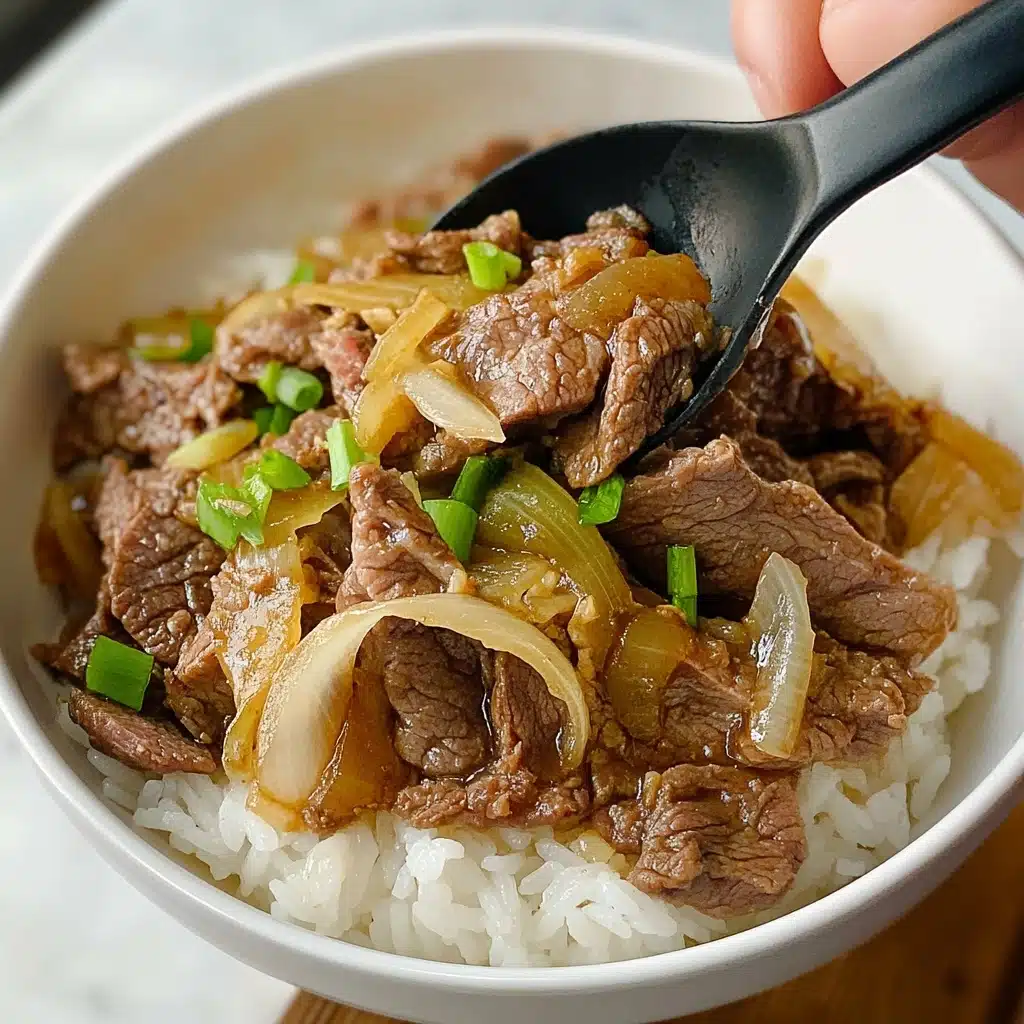
Garnishes
I always garnish my Gyudon with pickled red ginger because its sharp, tangy flavor contrasts beautifully with the rich beef sauce. Thinly sliced green onions also add a fresh hit that brightens each spoonful. For a little extra indulgence, topping with a soft-poached or raw egg yolk creates a creamy finish that my family adores.
Side Dishes
When I serve Gyudon, I like to add a simple miso soup on the side—its gentle warmth complements the beef bowl perfectly. A crunchy cucumber salad or steamed edamame also works wonderfully to add texture and freshness. If you want to go classic, some pickled vegetables (tsukemono) make a nice accompaniment.
Creative Ways to Present
For special occasions, I’ve layered the beef and onions over sushi rice in pretty donburi bowls and topped with a sprinkle of toasted sesame seeds and nori strips. It elevates the dish visually and adds nuttiness that’s delightful. You can also serve Gyudon in smaller appetizer-sized bowls for a fun party spread—everyone loves dipping their spoon into that rich sauce!
Make Ahead and Storage
Storing Leftovers
I store leftover beef and onions in airtight containers in the fridge, and they usually keep well for 2 to 3 days. The flavors actually deepen overnight, so sometimes leftovers taste even better the next day. Just make sure to cool the mixture before refrigerating to maintain freshness.
Freezing
If I have more than what can be eaten within a few days, I portion the Gyudon mixture into freezer-safe containers or bags. It freezes beautifully for up to 3 to 4 weeks without losing much flavor or texture. When ready to use, I thaw it slowly in the fridge overnight—no weird textures!
Reheating
To reheat, I warm the Gyudon gently in a pan over low heat with a splash of water or dashi to loosen the sauce—this keeps the beef tender and prevents drying out. Microwaving works too, but be sure to cover it to keep moisture in. Serve immediately for best taste.
FAQs
-
Can I make Gyudon without dashi?
While dashi gives Gyudon its authentic umami base, you can substitute it with beef or vegetable broth if necessary, though the flavor will be less traditional. Some people prefer to skip dashi and rely more on soy sauce, sake, and mirin for flavor—this still tastes great but leans more towards a sukiyaki-style beef bowl.
-
What cut of beef is best for Gyudon?
The key is to use thinly sliced, tender beef like ribeye, sirloin, or chuck eye roll. If your local store doesn’t carry pre-sliced beef for Gyudon, place a small beef roast in the freezer for 10-15 minutes to firm it up, then slice thinly against the grain with a sharp knife.
-
Can I prepare Gyudon sauce in advance?
Absolutely! You can mix the sauce ingredients ahead of time and refrigerate it for up to 2 days. Just combine with the beef and onions when you’re ready to cook, which can save you some time on busy days.
-
How do I prevent the beef from becoming tough?
Because the beef is really thin, it cooks very quickly, so a brief simmer of 3 to 4 minutes is all you need. Avoid overcooking by keeping the heat low once it simmers and removing the pan from heat as soon as the beef turns color.
-
What can I serve with Gyudon to complete the meal?
Traditional side dishes include miso soup, pickled vegetables, or a simple green salad. Steamed edamame or a cucumber sunomono (vinegar) salad also pairs nicely to balance the hearty beef bowl.
Final Thoughts
This Gyudon (Japanese Beef Rice Bowl) Recipe really holds a special place in my kitchen—and for good reason. It’s quick, packed with flavor, and hits all those comforting notes that make you feel like you’re dining in a cozy Japanese eatery. I truly encourage you to give it a try; once you make it, you’ll wonder how you ever got through weeknights without this delicious bowl of goodness. Trust me, it’s a recipe you’ll revisit time and time again!
Print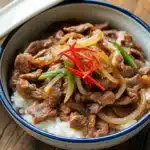
Gyudon (Japanese Beef Rice Bowl) Recipe
- Prep Time: 5 minutes
- Cook Time: 15 minutes
- Total Time: 20 minutes
- Yield: 2 servings
- Category: Main Dish
- Method: Stovetop
- Cuisine: Japanese
Description
Gyudon is a classic Japanese beef rice bowl featuring thinly sliced tender beef and onions simmered in a savory-sweet dashi-based sauce. Served over steamed Japanese short-grain rice and garnished with pickled red ginger, this comforting dish is quick to prepare and packed with umami flavor, making it a beloved staple in Japanese home cooking.
Ingredients
Main Ingredients
- 1/2 onion (4 oz, 113 g), thinly sliced
- 1 green onion/scallion, sliced diagonally
- 1/2 lb thinly sliced beef (such as ribeye), cut into 3-inch pieces
Sauce Ingredients
- 1/2 cup dashi (Japanese soup stock)
- 2 Tbsp sake (or dry sherry, Chinese rice wine, or water for non-alcohol)
- 2 Tbsp mirin (or 2 Tbsp sake/water + 2 tsp sugar)
- 3 Tbsp soy sauce
- 1 Tbsp sugar (adjust to taste)
For Serving
- 2 servings cooked Japanese short-grain rice (about 1 2/3 cups or 250 g per serving)
- Pickled red ginger (beni shoga or kizami beni shoga), for garnish
Instructions
- Prepare Ingredients: Thinly slice the onion and diagonally slice the green onion/scallion. Partially freeze the beef for 10 minutes until semi-frozen, then cut it into 3-inch wide pieces for easier cooking.
- Make the Sauce in Pan: In a large frying pan (off heat), combine dashi, sake, mirin, soy sauce, and sugar. Stir well until the sugar dissolves.
- Add Onion and Beef: Spread the onion slices evenly in the pan with the sauce, separating the layers. Place the beef slices on top, making sure to separate them so they cover the onions evenly.
- Simmer: Cover the pan with a lid and turn on medium heat. Once it starts simmering, reduce heat to low and cook for 3–4 minutes, keeping the pan covered.
- Skim and Add Green Onions: During simmering, open the lid to skim off scum and fat using a fine-mesh skimmer once or twice. Sprinkle sliced green onions over the beef and cook covered for one more minute. Optionally, you can add beaten eggs at this stage if desired.
- Serve: Scoop cooked Japanese short-grain rice into bowls. Drizzle some of the pan sauce over the rice, then add the beef and onion mixture on top. Optionally, add extra sauce and garnish with pickled red ginger before serving.
Notes
- Traditional Kansai-style gyudon skips dashi and starts by stir-frying onions in oil until tender, then adding beef and sugar before introducing the sake, mirin, and soy sauce.
- You can add beaten egg either while cooking or just before serving for a richer flavor and texture.
- Leftovers can be stored in an airtight container in the refrigerator for 2–3 days or frozen for 3–4 weeks.
- Using semi-frozen beef makes slicing and separating thin slices easier and prevents them from clumping during cooking.
- This dish pairs perfectly with steamed short-grain Japanese rice for the authentic experience.

